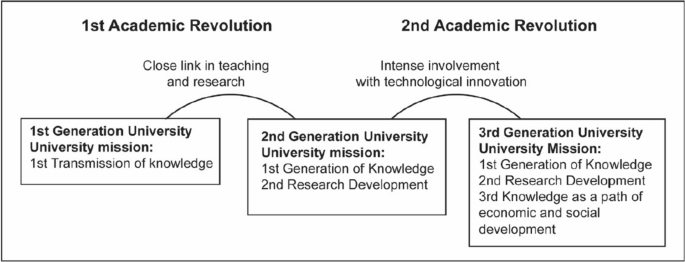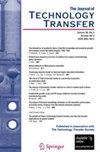The entrepreneurial university and development of large-scale research infrastructure: exploring the emerging university function of collaboration and leadership
IF 4.3
2区 管理学
Q1 MANAGEMENT
引用次数: 0
Abstract
Abstract This paper aimed to explore the emerging university function of collaboration and leadership in developing large-scale research infrastructure (LRI). A qualitative approach, drawing from both primary and secondary data, was employed to delve deeper into the roles and aspects of the entrepreneurial university pertinent to LRI development. The study highlighted the need for the entrepreneurial university to establish a strategic direction for collaboration and leadership in LRIs. A conceptual model was crafted that delineated the central role of the entrepreneurial university, segmenting the findings into three research elements: (1) research and education (2) collaboration, and (3) utilization and impact. Actor perspectives from both academia and industry were included. The findings emphasized that entrepreneurial universities had to engage more robustly with external actors to foster practical research applications. Universities were found to require a more synergistic role. The model proposed that entrepreneurial universities should classify actors not only by their viewpoint but also by their potential role in LRI. Key actors were identified as belonging to LRI and multi-academic environments, with some being directly involved, while others were indirectly or peripherally engaged. Directly involved actors, including numerous academic and industrial users, had a clear understanding of LRI utility and engagement, whereas indirectly involved ones were curious yet unsure about LRI interaction.

创业型大学与大规模研究基础设施建设:探索新兴大学的协作与领导功能
摘要:本文旨在探讨大学在发展大规模研究基础设施(LRI)中的协作和领导作用。采用定性方法,从一手和二手数据中提取,深入研究创业型大学与LRI发展相关的角色和方面。该研究强调了创业型大学在LRIs中建立合作和领导战略方向的必要性。我们精心设计了一个概念模型,描述了创业型大学的核心作用,将研究结果分为三个研究要素:(1)研究和教育;(2)合作;(3)利用和影响。来自学术界和工业界的演员观点被包括在内。研究结果强调,创业型大学必须更积极地与外部参与者接触,以促进实际的研究应用。研究发现,大学需要发挥更大的协同作用。该模型提出创业型大学不仅要根据行为者的观点对其进行分类,还要根据其在LRI中的潜在作用对其进行分类。关键行为者被确定为属于LRI和多学术环境,其中一些直接参与,而另一些则间接或间接参与。直接参与的参与者,包括众多学术和工业用户,对LRI的效用和参与度有清晰的理解,而间接参与的参与者对LRI的交互感到好奇但不确定。
本文章由计算机程序翻译,如有差异,请以英文原文为准。
求助全文
约1分钟内获得全文
求助全文
来源期刊

Journal of Technology Transfer
MANAGEMENT-
CiteScore
10.20
自引率
12.50%
发文量
66
期刊介绍:
The Journal of Technology Transfer provides an international forum for research on the economic, managerial and policy implication of technology transfer, entrepreneurship, and innovation. The Journal is especially interested in articles that focus on the relationship between the external environment and organizations (governments, public agencies, firms, universities) and their innovation process. The Journal welcomes alternative modes of presentation ranging from broad empirical analyses, to theoretical models, to case studies based on theoretical foundations. Officially cited as: J Technol Transf
 求助内容:
求助内容: 应助结果提醒方式:
应助结果提醒方式:


